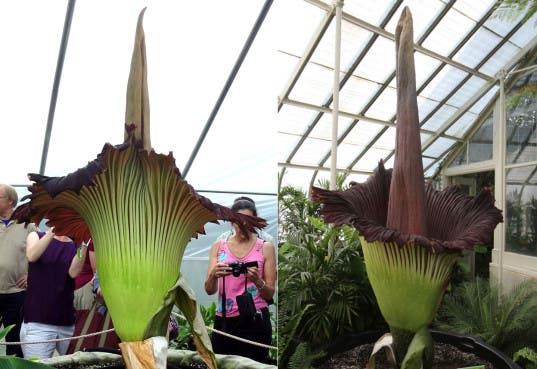It’s big, it’s beautiful… and it reeks. Amorphophallus titanum, more commonly known as the corpse flower, is the flowering plant with the largest unbranched inflorescence in the world, and it often requires over 7 years to bloom. For this particular flower in Denver, it took 15. The flower will not only delight visitors with its unique look, but will also threaten all noses with a distinct rotten meat smell.

The titan arum grows in the wild only in the equatorial rainforests of Sumatra, Indonesia, but it’s artificially grown in several places across the world. The first documented flowerings in the United States were at New York Botanical Garden in 1937 and 1939, and the number of cultivated plants has significantly increased in recent years. In 2003, the tallest bloom in cultivation, some 2.74 m (8 ft 11 in) high, was achieved at the Botanical Garden of the University of Bonn in Germany.
Basically, every time it blossoms, it’s a big deal; it’s a rare event and people crowd to see it – despite the disgusting odor has an important role. It attracts beetles and flesh flies which help the plant to pollinate. If you want to see it without witnessing the smell, check out this YouTube live feed from KUSA Denver.






